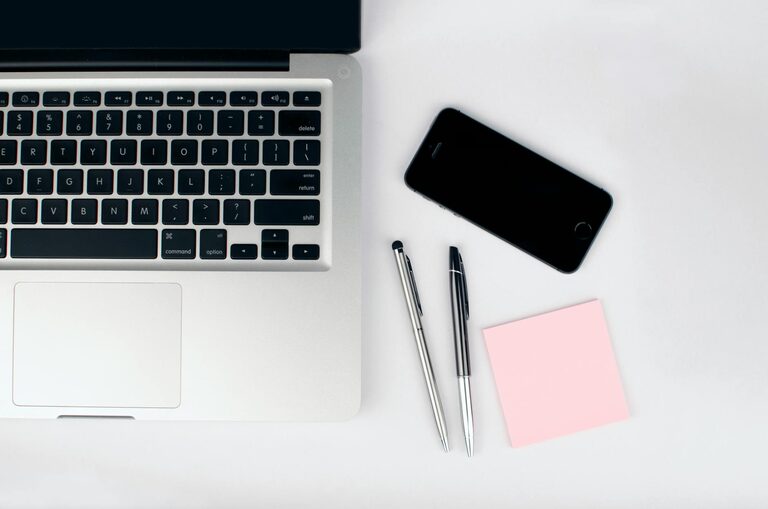How to Declutter Your Digital Life: Practical Steps for a Cleaner Workspace

In today’s fast-paced world, our digital lives can easily become cluttered with endless files, apps, and notifications. This digital chaos can affect your productivity, focus, and even your mood. Taking the time to declutter your digital space can lead to a calmer, more organized, and efficient environment. In this guide, we’ll explore practical ways to help you clean up your digital life — step by step.
Why Decluttering Your Digital Life Matters
Just as a cluttered physical workspace can be distracting, so can a disorganized digital environment. When your devices are overloaded with unnecessary files, apps, and alerts, it’s harder to find what you need and stay focused. Decluttering helps:
– Improve productivity by reducing distractions
– Save storage space on your devices
– Protect your privacy and security
– Reduce digital stress and overwhelm
By making digital tidying a regular habit, you’ll enjoy a smoother, simpler online experience.
Step 1: Organize Your Files and Folders
A cluttered desktop or smartphone photo library makes it difficult to find important documents or memories when you need them.
Tips to organize files effectively:
– Create clear folders: Group similar files together—such as Work, Personal, Finances, and Photos.
– Use descriptive names: Rename files and folders with concise, meaningful titles.
– Delete duplicates and unnecessary files: Use duplicate file finders or manually review and delete outdated documents.
– Back up important files: Use cloud storage or an external hard drive to keep copies safe.
Maintaining a consistent folder structure will keep your files easier to navigate over time.
Step 2: Manage Your Email Inbox
An overflowing inbox can be overwhelming and distract from urgent messages.
How to take control of your emails:
– Unsubscribe from unwanted newsletters: Use tools like Unroll.Me or unsubscribe links in emails.
– Set up filters and labels: Automatically sort incoming emails into categories or folders.
– Archive or delete old messages: Keep only emails that require action or reference.
– Schedule regular email checks: Avoid constant inbox monitoring to increase focus.
A clean inbox helps you respond promptly and reduces email anxiety.
Step 3: Declutter Your Apps and Software
Unused apps can consume space, slow down your device, and cause notifications overload.
Decluttering your apps:
– Review installed apps: Remove apps you rarely or never use.
– Limit startup programs: On computers, disable unnecessary programs from launching on startup.
– Organize apps into folders: Group related apps to simplify your device’s home screen or app drawer.
– Update apps regularly: Ensure security and performance by keeping the software current.
Less clutter means faster devices and fewer distractions from non-essential notifications.
Step 4: Streamline Your Browser
Web browsers often become repositories for countless tabs, bookmarks, and extensions that can slow down your browsing experience.
Tips for a cleaner browser:
– Close unused tabs: Use tools or extensions to manage and suspend tabs you aren’t actively using.
– Organize bookmarks: Categorize and delete bookmarks you no longer need.
– Review and remove extensions: Disable browser add-ons that are unnecessary or cause slowdowns.
– Clear browsing data periodically: Delete cached files and cookies to improve speed and privacy.
A tidy browser helps you find what you need quickly and browse more efficiently.
Step 5: Tame Your Notifications
Constant alerts can interrupt your focus and increase stress.
Managing notifications:
– Turn off non-essential notifications: Disable alerts from apps or services that don’t require immediate attention.
– Use “Do Not Disturb” modes: Schedule times when notifications are muted, such as during work hours or at night.
– Customize notification settings: Choose sound, vibration, or visual alerts based on priority.
Controlling notifications helps maintain focus and improve your digital wellbeing.
Step 6: Secure Your Digital Life
Part of decluttering is protecting your devices and data by enhancing security.
Simple security steps:
– Use strong, unique passwords: Consider a password manager to keep track of them.
– Enable two-factor authentication: Add an extra layer of protection for your accounts.
– Keep software updated: Regularly install updates to patch vulnerabilities.
– Delete old accounts: Close unused social media or online service accounts to minimize risk.
Secure digital habits keep your information safe and reduce the clutter that can come from spam or account compromise.
Step 7: Create a Routine for Maintenance
Decluttering isn’t a one-time event—regular upkeep is key.
How to maintain a tidy digital space:
– Schedule monthly or quarterly cleanups for files, apps, and emails.
– Review your digital habits regularly, adjusting as needed.
– Stay mindful of what you download or save to avoid unnecessary clutter.
By making digital decluttering a habit, you’ll enjoy lasting benefits for your focus, productivity, and peace of mind.
—
Digital clutter can sneak up on anyone. But by following these practical steps, you can regain control of your devices and feel more organized and efficient. Start small, be consistent, and enjoy the calm that comes with a cleaner digital life.




